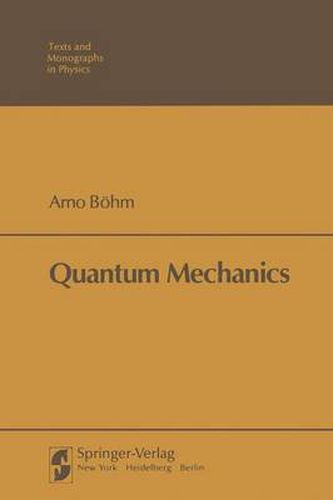Readings Newsletter
Become a Readings Member to make your shopping experience even easier.
Sign in or sign up for free!
You’re not far away from qualifying for FREE standard shipping within Australia
You’ve qualified for FREE standard shipping within Australia
The cart is loading…






This title is printed to order. This book may have been self-published. If so, we cannot guarantee the quality of the content. In the main most books will have gone through the editing process however some may not. We therefore suggest that you be aware of this before ordering this book. If in doubt check either the author or publisher’s details as we are unable to accept any returns unless they are faulty. Please contact us if you have any questions.
This book was written as a text, although many may consider it a mono graph. As a text it has been used several times in both the one-year graduate quantum-mechanics course and (in its shortened version) in a senior quantum mechanics course that I taught at the University of Texas at Austin. It is self-contained and does not require any prior knowledge of quantum mechanics. It also introduces the mathematical language of quantum mechanics, starting with the definitions, and attempts to teach this language by using it. Therefore, it can, in principle, be read without prior knowledge of the theory of linear operators and linear spaces, though some familiarity with linear algebra would be helpful. Prerequisites are knowledge of calculus and of vector algebra and analysis. Also used in a few places are some elementary facts of Fourier analysis and differential equations. Most physical examples are taken from the fields of atomic and molecular physics, as it is these fields that are best known to students at the stage when they learn quantum mechanics. This book may be considered a monograph because the presentation here is different from the usual treatment in many standard textbooks on quantum mechanics. It is not that a different kind of quantum mechanics is pre sented here; this is conventional quantum mechanics ( Copenhagen inter pretation ).
$9.00 standard shipping within Australia
FREE standard shipping within Australia for orders over $100.00
Express & International shipping calculated at checkout
This title is printed to order. This book may have been self-published. If so, we cannot guarantee the quality of the content. In the main most books will have gone through the editing process however some may not. We therefore suggest that you be aware of this before ordering this book. If in doubt check either the author or publisher’s details as we are unable to accept any returns unless they are faulty. Please contact us if you have any questions.
This book was written as a text, although many may consider it a mono graph. As a text it has been used several times in both the one-year graduate quantum-mechanics course and (in its shortened version) in a senior quantum mechanics course that I taught at the University of Texas at Austin. It is self-contained and does not require any prior knowledge of quantum mechanics. It also introduces the mathematical language of quantum mechanics, starting with the definitions, and attempts to teach this language by using it. Therefore, it can, in principle, be read without prior knowledge of the theory of linear operators and linear spaces, though some familiarity with linear algebra would be helpful. Prerequisites are knowledge of calculus and of vector algebra and analysis. Also used in a few places are some elementary facts of Fourier analysis and differential equations. Most physical examples are taken from the fields of atomic and molecular physics, as it is these fields that are best known to students at the stage when they learn quantum mechanics. This book may be considered a monograph because the presentation here is different from the usual treatment in many standard textbooks on quantum mechanics. It is not that a different kind of quantum mechanics is pre sented here; this is conventional quantum mechanics ( Copenhagen inter pretation ).